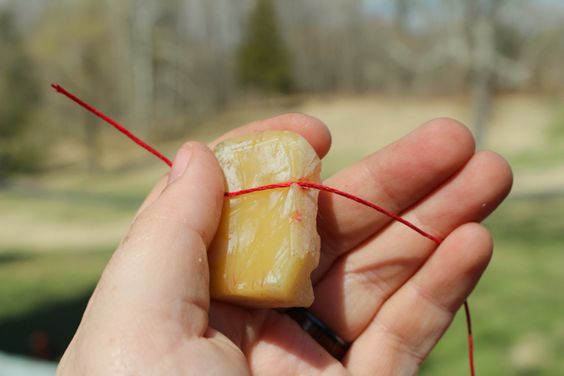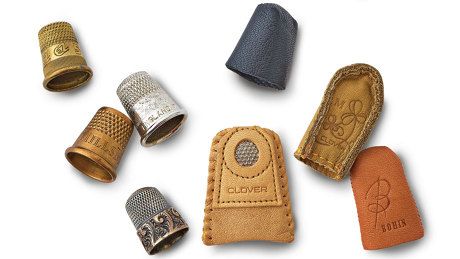Tips To Sew Heavyweight Fabrics – How To Sew Thick Fabric Comfortably
Jump To:
If you want to sew heavyweight fabrics comfortably by hand, then there are various things that you can do to make your work easier. You should start to sew the heavyweight fabrics with strong tools so that you can move them easily through fabrics like denim, canvas, wool, or even leather. With the help of some useful tools and a bit of patience, you can sew your thick fabric in no time. Read on to find easy methods sewing heavy fabric and also check out heavy weight fabrics.
3 Methods To Sew Thick Fabrics | Sewing Heavy Fabric
Method 1:
Use Right Tools
1. Choose The Needle That Is Of Size 4 Or Larger
Depending on the fabric type on which the sewing is to be done, needles are used that come in different sizes. So, first pick out the needle that is of size 4 since the size 4 needle works best on thicker fabrics like upholstery, denim, or canvas.
When you visit a craft store, you can see all the packages of the needles and choose the needle you wanted as the needle’s size remains retained on them.
- A needle of size 4 is best for denim, and a needle of size 3 is best for working with leather fabrics.
- On the packaging itself, many needles will tell you for which type of fabric they are best for.
- For thick fabrics, choose a wedge point needle-like vinyl or leather to pierce the heavy fibers more easily, and for other fabrics like canvas, choose a sharp tip for woven.
2. Opt For Heavy Duty Thread Or Upholstery To Sew Thick Fabric
For your thicker fabric, choose a heavy weight thread so that it won’t tear. Search for threads labeled as “extra strong” or “upholstery weight” or something that is similar for your project.
- Matching with your fabric, choose a heavy weight thread color.
3. Try To Use A Sewing Awl For Sewing Heavyweight Fabric Quickly
To sew the thick fabric in a much easier way, use a sewing awl, which is a small tool in size. Feeding the thread through the hole put the needle in the awl.
Using the needle punch a hole all the through your fabric and pull the thread out from the bottom. Since the thread is attached to the sewing awl’s needle, this process will be easy to do.
- If you are working with leather or canvas, a sewing awl is a great tool.
4. Thread Should Be Waxed To Make It Slide Through The Thick Fabric Easily

Buy the wax for your thread, which is popularly known as the thread conditioner. To make the thread slick, slide the thread through the wax. It will make the process of moving through your thick fabric for the thread to be easy.
- After the thread is waxed, pull the yarn through the needle.
5. To Protect Your Finger From The Sewing Needle, Use A Thimble

While sewing something from hand, it can be easy to prick your finger with the needle. To protect your finger from accidental pokes, wear a thimble on the pointer finger on the opposite hand that you use to sew.
- Search for a thimble at a big box store or at a local craft.
Method 2:
Choosing A Stitch And Seams
1. Use Backstitch
For doing a backstitch, poke your needle through the fabric from the back and come up through the front. Through the fabric, bring the needle back down about 1 cm (0.39 in) away from the original stitch. Later, pull it back up through the fabric another 1cm (0.39 in) away from the stitch.
Start a loop back down into the fabric located right next to your first stitch and then continue this process for the backstitch.
- For thick and heavy weight fabrics, the backstitch is a great stitch as it is simple and holds the fabric tightly in place.
2. Catch Stitch, Sew Your Fabric To Join The Heavyweight Fabric
Catch stitch is made in a line along the fabric’s edge by sewing zig zags next to one another. This stitch is sewed in such a manner so that the stitch overlaps the folded edge of the fabric.
3. Baste Stitch To Sew Thick Fabric Quickly
By threading a needle, weave the needle in and out of the fabric in a straight line. A space of about 1 cm (0.39 in) is to be left between each stitch while stitching for a quick and easy baste stitch.
- Sewing a baste stitch is not a heavy-duty option, but it will help you to keep your fabric together.
4. Bias Bound Seam To Cover The Edges Of Thick And Heavyweight Fabric
At a craft store, pick out a bias binding that matches with your heavy weight fabric. Sew the bias binding onto the edge of the thick fabric in order to hide it using a straight stitch. This is the best way to create a smooth edge.
5. Opt For French Seam For An Invisible Sewing Job
By sewing the seam on the inside of your project, make a French seam so that it cannot be seen. Moreover, your fabric should be folded along the seam. It means it should be done in such a manner that they remain hidden and face one another. Later, you need to sew a seam down them.
Along the seam, trim your fabric, and you can also iron it so that it remains flat and then sew another seam to finish it off. Pins must be used, which will help you to hold the fabric in place while sewing.
Method 3:
Press And Hold The Fabric
1. Iron The Edges And Fold To Keep In Place
Fold the edges of the fabric where sewing is to be done and then use an iron to cease them so that the thick fabric remains folded. Between your fabrics, lay a cloth and then iron it to protect your fabric.
- Lay a cloth on the top by folding the edges before using the iron.
- Avoid touching the hot sections of the iron in order to protect yourself from burning.
2. Use Pins To Hold The Folds Together As You Sew
Through the thick fabric, push long pins to hold the folded edge or several pieces of fabric together. Through the fabric, slide the pins and then remove them carefully once you have done sewing in the specific area.
- Be very careful and attentive while using the pin and do not poke yourself with the pin when you are pushing it through the fabric.
3. Use Clips To Hold The Folds If Your Fabric Is Very Thick
To hold together very thick and heavy weight fabric or several pieces of it, regular binding clips or something similar to that can be handy. By attaching the clips to the edge or the area you want to sew, start sewing, and then remove the clips once you are done sewing.
- One might use clips to hold the folded edges of the thick fabric so that you can sew a hem.
4. Hit Thick Seams With Rubber Mallet To Flatten And Smooth Them
While using an extra thick fabric, your seams may feel bulky, especially if they cross with another seam. To help the fabric to get flattened out, tap the seam with the help of a hammer or rubber mallet. Repeat this process a couple of times to smooth out the seam so that it does not remain so thick.
How do I sew through very thick material?
How do you raise the presser foot for thick fabric?
The presser foot lever can be raised to two different positions. If the fabric does not fit under the presser foot, for example, when sewing together thick fabrics, raise the presser foot lever to its highest position so that the fabric can be placed under the presser foot.
What needle should I use for thick fabric?
For heavy weight fabrics such as denim, canvas and upholstery you will need a larger needle such as a 100/16, 110/18 or 120/20. The heavier the fabric, the larger the needle sized required.
Why won’t my sewing machine sew through thick fabric?
The presser foot lever can be raised to two different positions. If the fabric does not fit under the presser foot, for example, when sewing together thick fabrics, raise the presser foot lever to its highest position so that the fabric can be placed under the presser foot.
How do you sew a bulky seam?
What tension should I use for thin fabric?
Use size 70/10 for really thin cotton like voile, size 80/12 for light to medium weight cotton, and 90/14 for thick cotton like denim.
How many layers of fabric can a sewing machine handle?
Home sewing machines are usually meant for medium weight fabrics, that too not too many layers – 3, 4 maximum. They start developing all those frustrating (inevitable, considering their delicate bodies) problems that they are prone to, a little prematurely.
What is a hump jumper?
The Hump Jumper is used to ease the presser foot up and over a particularly thick spot. Simply slip the Hump Jumper under the back of the presser foot on top of the fabric to get up and over the “hump”. It eliminate skipped stitches, stitches of uneven length and broken needles.
What is a 75 11 stretch needle used for?
Quilting Machine quilting 75/11 and 90/14 Quilting needles feature a sharp, tapered point and are designed to stitch through thick layers and intersecting seams. Use them for piecing quilts and machine quilting the layers together.
What is a 100 16 needle used for?
Large needle sizes – 100/16 and 120/18 – These are for heavyweight, tough fabrics, like thick leather, heavyweight canvas, and dense upholstery fabrics. They are used with heavyweight threads such as upholstery and topstitching threads.
How do you hand sew heavy fabric?
What controls the length of the stitches on a sewing machine?
3.01 SEWING MACHINE PARTS A B regulates the width of zigzag stitching and positions the needle for straight stitching stitch width control regulates the length of the stitch stitch length control located directly under the needle; usually has guidelines to help keep stitching straight needle or throat plate.
What protects your finger when sewing?
A thimble is a small pitted cup worn on the finger that protects it from being pricked or poked by a needle while sewing.
What thread tension should I use?
The dial settings run from 0 to 9, so 4.5 is generally the ‘default’ position for normal straight-stitch sewing. This should be suitable for most fabrics. If you are doing a zig-zag stitch, or another stitch that has width, then you may find that the bobbin thread is pulled through to the top.
